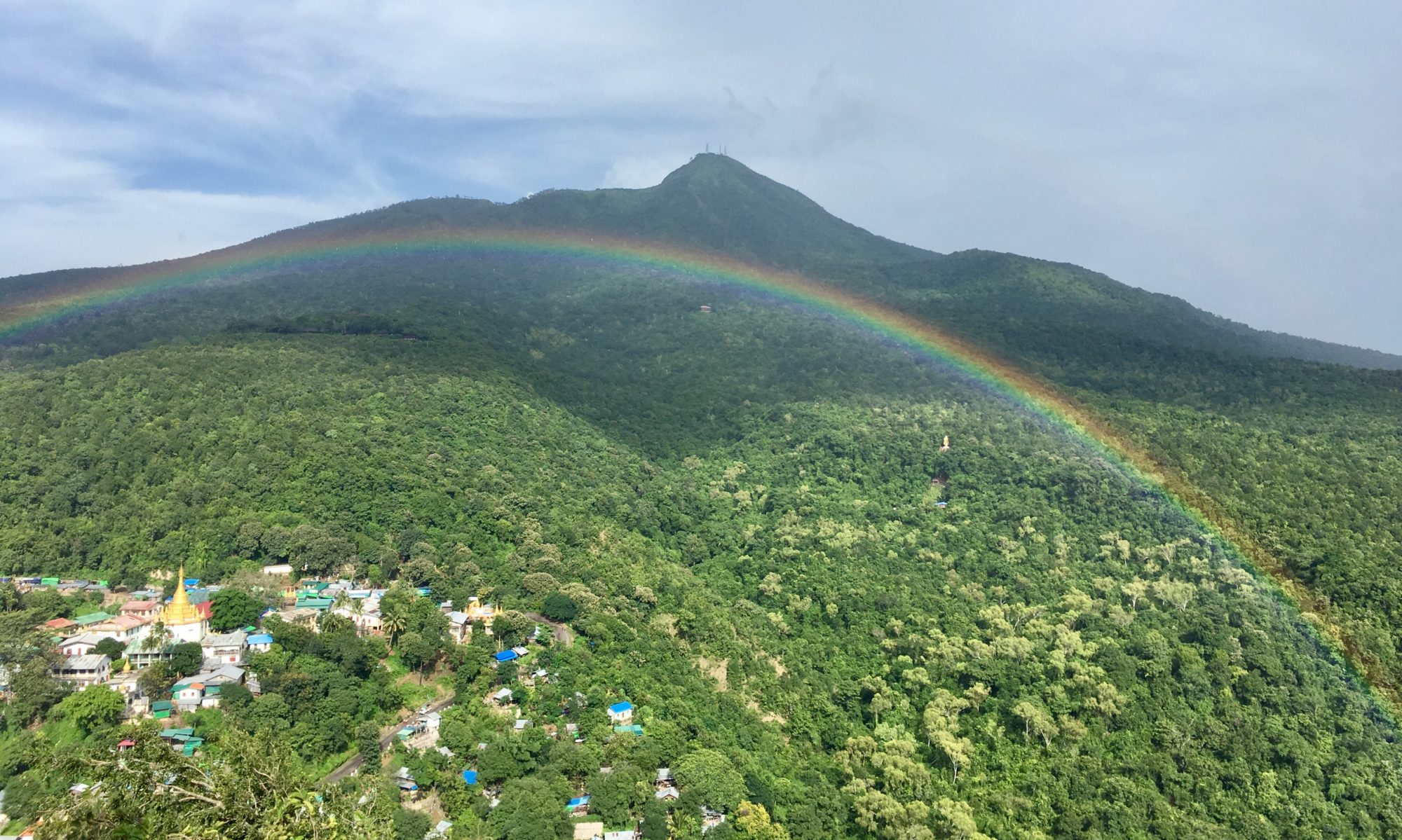Shwedagon Pagoda is a must visit in Yangon.
The ancient temple is a source of pride for the Burmese. From the first look, I knew why. At night, the Shwedagon Pagoda is a sight to behold. The 99-meter tall (325 feet) structure stood like a titan against the black backdrop. In flickering candlelight and orange incandescent, the golden pagoda, stupas, and temples gleam like the center of the sun.
The sky was sprinkling rain. We began our journey by leaving our shoes at the entrance. It is a common and expected practice when entering any temples or homes in Southeast Asia. The floors were slippery but the temple lined a path of non-skid plastic tiles for its visitors to walk on. While the hard plastic dug into my feet making it painful to walk on, it was better than falling on my face.

We navigated through the rain and worshippers who came from various corners of the world to see this famous sight. Around us are sounds of chanting, little boy monks playing, and bell tolling. The smell of incense permeated the air.

Our guide, Thar Thar, from LM Travel Myanmar told us that the Shwedagon Pagoda contains the hair relic, staff, water filter, and robe of Buddha. And according to legend, it was built over 2,500 years ago, making it the oldest in the world. Historians and archaeologists disagreed. They maintained that the pagoda was built by the Mon people between the 6th and 10th centuries AD. Regardless of its age, the Burmese consider this ancient place the most sacred pagoda in Myanmar.

The pagoda is plated with real gold and its top, the umbrella crown, is encrusted with over 2,000 rubies and 5,000 diamonds, the largest of which is 76 carats. All were donations from Buddhist believers. My friend, Laurie, asked our guide whether the temple worries someone would steal the treasure. Thar Thar replied that once the people gave the gift, they no longer think of them. It is a practice in letting go.

Buddhism teaches that human struggles stem from attachment: to things, to people, to our own ego. Sometimes the weight of it all can prevent us from moving forward. I am not a Buddhist but I do agree that the practice of letting go is a healthy exercise for the mind. While it is not easy nor pleasant to detach, learning to do so would lead to a true acceptance of the impermanence of life.

At the end of our visit, Thar Thar led us to a quiet corner of a veranda. It was a good spot to absorb the peaceful vibration in the air. This place leaves a strong impression. For generations, it serves as a witness to periods of wars and peace in one of the oldest civilization in the world. I wondered whether it would it stand for another millennium. Where would our humanity be then?


